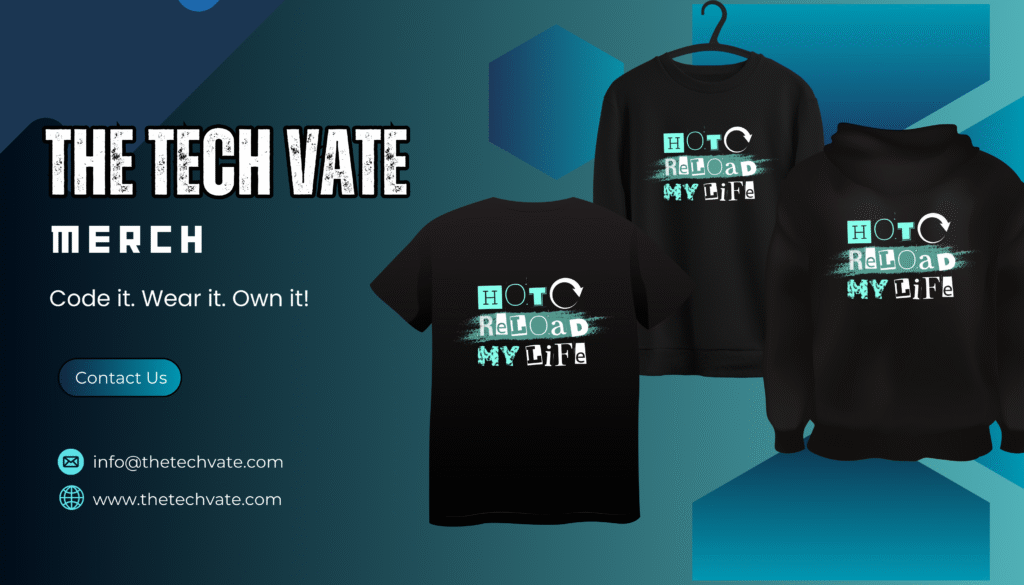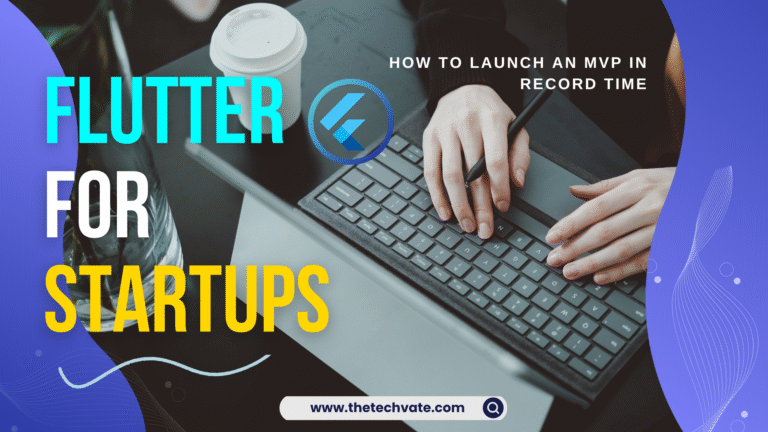Let’s be honest – the “Flutter vs Native” debate is the Marvel vs DC of the app development world. Both sides have die-hard fans, both swear they’re the superior choice, and both make valid points.
If you’ve been hanging around developer forums, you’ve probably seen it play out:
“Flutter’s fast and beautiful!”
“But native apps are REAL apps!”
“Flutter runs on a single codebase!”
“Yeah, but what about performance, bro?”
By the end of it, you’re left sipping your cold coffee, wondering which side to choose for your next big project.
So, let’s end the confusion (or at least make it funny). In this article, we’ll break down Flutter vs Native Development – comparing performance, scalability, maintenance, and long-term strategy – in plain English, with a dash of humor and a sprinkle of developer wisdom.
The Setup: What Exactly Are We Comparing?
Before we let these two battle it out, let’s define who’s who.
 Flutter (The Cross-Platform Rockstar):
Flutter (The Cross-Platform Rockstar):
Flutter is Google’s open-source UI toolkit that lets you build apps for Android, iOS, web, and even desktop – all from a single codebase.
It uses Dart, a language optimized for UI performance and hot reload magic. Flutter is like that friend who can sing, dance, and code – and still make it look effortless.
 Native Development (The OG Contender):
Native Development (The OG Contender):
Native development means writing separate code for each platform – Kotlin/Java for Android and Swift/Objective-C for iOS.
It’s the old-school approach. The tried-and-true. The “I was here before Flutter was born” veteran.
So the question is: should you build two separate native apps, or one Flutter app that works everywhere?
Grab your popcorn. Let’s dive into the ring.
Round 1: Performance – Who Runs Faster?
Performance is the holy grail of app development. No one likes a laggy app – unless it’s your competitor’s.
Flutter’s Take
Flutter compiles to native ARM code, which means it doesn’t rely on a slow JavaScript bridge like older cross-platform tools (cough, React Native).
UI rendering happens through Flutter’s own engine (Skia), not the platform’s native components. So it draws pixels directly on the screen – giving it blazing-fast performance most of the time.
And thanks to Hot Reload, developers can tweak UI or logic instantly without restarting the whole app – a blessing for productivity.
In simple terms: Flutter is fast. Maybe not Cheetah running on Red Bull fast, but definitely Ferrari cruising on a highway fast.
Native’s Take
Native apps are the real deal when it comes to performance. They talk directly to the platform’s APIs, hardware, and system components. No layers, no engines, no middlemen.
So when you need millisecond-level precision – like in high-end games, AR apps, or apps that manage heavy computations — native takes the crown.
Verdict
If performance is your absolute top priority (like building a 3D racing game or a video-editing app), go native.
But for 95% of apps — social, ecommerce, fintech, productivity – Flutter performs like a champ.
Winner: Flutter (by practicality, not raw power)
Round 2: Development Speed – Who Ships Faster?
Ah yes, time – the one resource developers never have enough of.
Flutter’s Take
One codebase. One team. One love.
With Flutter, you write once and deploy everywhere. That means you can build your app for both Android and iOS at the same time – without maintaining two separate projects.
Add to that Hot Reload, and you’ve got a setup where your devs can experiment, iterate, and fix bugs faster than you can say “git commit”.
Native’s Take
Native development is like managing twins who refuse to share toys.
You need two teams, two codebases, two sets of bugs – and twice the caffeine.
Yes, you get ultimate control and platform purity, but it comes at the cost of time and money. You’ll be syncing features and fixing the same bugs twice.
Verdict
For startups and teams that want to hit the market fast, Flutter wins by a landslide.
Native only makes sense if you’ve got deep pockets and an army of devs.
Winner: Flutter
Round 3: Maintenance – Who Ages Better?
Apps, like humans, need maintenance. Bugs pop up, features get outdated, and users always want something “new and shiny.”
Flutter’s Take
With Flutter, maintenance is a dream. One update fixes both Android and iOS apps.
If Google releases a new version of Flutter, you just upgrade your SDK, test, and deploy. No more juggling two projects like a circus clown.
And since UI and logic live in one place, your team spends less time fixing the same issue twice.
Native’s Take
Maintaining native apps is like mowing two lawns. You can’t skip one, and you’ll definitely notice the difference.
If Apple updates iOS and changes an API, you fix it in the iOS code.
If Android follows suit, congrats – you get to do it again.
It’s double the testing, double the work, double the expense.
Verdict
Unless you love debugging the same issue in two languages, Flutter’s single-code maintenance wins easily.
Winner: Flutter
Round 4: Cost and Resource Efficiency
Let’s talk money – because no matter how romantic your app idea sounds, someone’s footing the bill.
Flutter’s Take
Flutter lets you build for multiple platforms with one team and one codebase, cutting development costs significantly.
You don’t need to hire separate Android and iOS teams. Just one group of Flutter devs can handle it all. Plus, updates and bug fixes cost less.
Native’s Take
Native development requires separate teams and double the time.
That’s two salaries, two sets of tools, and twice the project management headaches.
It’s great if you’re a big company like Spotify or Netflix. But for small teams and startups, it can burn through the budget faster than an App Store ad campaign.
Verdict
If you’re a startup or solo developer – Flutter will save you money, time, and probably your sanity.
Winner: Flutter
Round 5: UI and User Experience (The Feel Factor)
Now we’re entering the beauty contest round – how your app feels to users.
Flutter’s Take
Flutter gives you pixel-perfect control. Thanks to its own rendering engine, your UI looks identical on both Android and iOS – Design and Cupertino widgets, so you can make your app look native to either platform. Or go wild and design something completely custom.
And since you’re not dependent on OEM widgets, you avoid version inconsistency between Android and iOS.
Native’s Take
Native apps are naturally optimized for their platforms. They use the system’s built-in UI components, ensuring 100% authenticity.
When Apple updates its UI, your iOS app will automatically “feel” modern.
However, maintaining a consistent design between platforms can be tricky since each team might interpret design differently.
Verdict
For 99% of users, Flutter’s UI feels smooth, natural, and consistent. But for hardcore platform purists (like those who notice every pixel in iOS animations), native still feels slightly more authentic.
Winner: Tie
Round 6: Scalability – Can It Handle the Future?
Building an MVP is easy. Scaling it to millions of users – that’s where the real game begins.
Flutter’s Take
Flutter’s architecture is modular and maintainable. Large companies like Alibaba, Toyota, and Google Ads use it at scale.
You can split your app into feature modules, maintain multiple packages, and even integrate platform-specific code using platform channels when needed.
The main challenge? Flutter’s still evolving. Large-scale projects may face issues with new SDK updates or plugin compatibility.
Native’s Take
Native development has been around forever. It’s rock-solid, time-tested, and optimized for scalability.
When your app hits 10 million users, you’ll appreciate the control and stability native gives you.
Verdict
If you’re building a large, mission-critical system (like a banking or streaming platform), native still has the edge in stability and maturity.
But for most growing startups, Flutter’s scalability is more than enough.
Winner: Native (by maturity)
Round 7: Ecosystem and Community
Developers love community. Because let’s be real – half our problems get solved on Stack Overflow.
Flutter’s Take
Flutter’s community is exploding. Thousands of open-source packages, active GitHub repositories, and Google’s own support make it an exciting ecosystem.
Need a date picker? There’s a package.
Need Firebase integration? There’s official support.
Need motivation? There’s a Reddit thread for that too.
However, since Flutter is relatively new, not every plugin is perfect. Sometimes you’ll find one that’s “almost working” but breaks on iOS 18.
Native’s Take
Native development has been around since the dawn of smartphones. The documentation, libraries, and community support are deep, reliable, and mature.
There’s almost no problem that someone hasn’t already solved.
Verdict
Flutter’s ecosystem is growing fast, but native still wins in terms of maturity and depth.
Winner: Native
Round 8: Learning Curve – Which One’s Easier to Learn?
Flutter’s Take
If you already know a bit of programming, Dart is easy to pick up. Flutter’s widget-based system makes UI development super intuitive – everything is a widget (and I mean everything).
Plus, the documentation is amazing. Flutter devs are spoiled with examples, tutorials, and memes.
Native’s Take
Learning native means mastering two worlds – Kotlin/Java for Android, and Swift/Objective-C for iOS. That’s double the complexity, double the headache.
However, if you’re already an experienced mobile dev, native will feel more “complete” and direct.
Verdict
For beginners and cross-platform lovers, Flutter is much easier to learn and master.
Winner: Flutter
Round 9: Integration with Existing Systems
Sometimes you’re not building a new app – you’re updating an existing native app.
Flutter’s Take
Flutter offers add-to-app functionality – meaning you can integrate Flutter modules into existing native projects gradually.
This makes it perfect for hybrid teams testing the waters before fully migrating.
Native’s Take
Native apps integrate seamlessly with system APIs, sensors, and platform services by default.
Flutter can do this too, but you might need custom platform channels for advanced stuff (like Bluetooth LE or ARKit).
Verdict
Native is smoother for deep system integrations, but Flutter is catching up fast.
Winner: Native
The Strategic View – Which Should You Choose?
Let’s take a step back from the technical chaos.
| Category | Flutter | Native |
|---|---|---|
| Performance | Great (near-native) | Best possible |
| Development Speed | Fast | Slower |
| Maintenance | Easy (single codebase) | Complex (dual codebase) |
| Cost | Budget-friendly | Expensive |
| UI Consistency | Cross-platform identical | Platform-authentic |
| Scalability | Good | Excellent |
| Ecosystem | Growing | Mature |
| Learning Curve | Easy | Harder |
Final Verdict: The Balanced Take
So… Flutter vs Native Development – who wins?
Here’s the truth:
It’s not about who’s better, it’s about who’s right for you.
Choose Flutter if:
You’re a startup or indie developer.
You want to launch fast on multiple platforms.
You value cost efficiency and smooth UIs.
You love rapid development and modern tooling.
Choose Native if:
You’re building performance-heavy apps (games, AR, multimedia).
You already have dedicated Android/iOS teams.
You need full control over platform APIs and hardware.
In 2025 and beyond, Flutter isn’t just a “cross-platform alternative” – it’s a serious contender.
It gives you near-native performance, faster time-to-market, and happier developers. But native will always be the gold standard for full control and raw performance.
Final Thoughts
The Flutter vs Native battle isn’t ending anytime soon. But one thing’s clear – Flutter has redefined what’s possible with cross-platform development.
It’s fast, beautiful, and growing faster than your to-do list.
So whether you’re building the next big social app, a fintech platform, or your side-project dream – Flutter might just be your secret weapon.
Because at the end of the day, the best framework is the one that helps you ship amazing apps – without losing your sleep (or your sanity).
Final Winner: Flutter – by a practical knockout!
>>Checkout for more Flutter content
>>Checkout Flutter CheatSheets


 Flutter (The Cross-Platform Rockstar):
Flutter (The Cross-Platform Rockstar):










